The cargo ship RAMONA sailed into the Railway Bridge on 28 March 2012 at 2226 hours. There were no injuries, but very serious material damage to the bridge and minor damage to the ship. It had been agreed between the ship and the bridge keeper that passage could take place at 2226 hours. The bridge keeper’s disposition of the timing up to the passage at 2226 hours was based on specific attention to a train crossing the Railway Bridge and his experience and routine with the typical timing. This led to a very narrow time margin from the train crossing the Railway Bridge to the immediately subsequent opening process for the vessel’s intended passage through the bridge. The ship sailed faster than predicted by the bridge keeper and arrived at the Railway Bridge earlier than the bascule could be opened.
On 28 March 2012 at 1545 hours, the cargo ship RAMONA departed in ballast from Skive for Koverhar, Finland. The ship’s draft was 1.8 metres fore and 2.3 metres aft, and the ship showed the prescribed navigation lights. The master was on the bridge until approximately 45 minutes after departure, when he was relieved by the chief officer. When approaching the Aggersund Bridge, the master returned to the bridge and took over the watch.
At 1800 hours, the master called both the Railway Bridge and the Limfjord Bridge by telephone announcing the ship’s estimated passage of the bridges at 2230 hours. Both bridges reported OK for passage. The Railway Bridge could be passed at 2226 hours, and the ship’s speed was adjusted to match this time. The master was then alone on the bridge until 2200 hours, when the chief officer came to the bridge as a lookout.
The master called the Railway Bridge again at 2155 hours, this time on VHF channel 16, and then he switched to channel 12. The master reported that the ship could arrive earlier if needed. The bridge keeper reported that the bridge would open at 2226 hours and that the ship could pass. This was OK for the ship so it proceeded at the current speed ready for the passing at 2226 hours. It was also agreed that both parties would be on standby on VHF channel 12.
The master contacted the Limfjord Bridge (road bridge) at 2215 hours on VHF channels 16 and 12 and reported that the ship had been granted passage through the Railway Bridge at 2226 hours. The master was informed that the Limfjord Bridge would be ready for passage after the ship’s passage of the Railway Bridge.
When RAMONA at 2223 hours was 1 nm, and at 2223 hours 0.5 nm, from the Railway Bridge, the ship’s speed over the ground was 8.5 knots according to the AIS information.
When RAMONA at 22:25:21 was 0.17 nm from the Railway Bridge, the ship’s speed over the ground was 7.6 knots.
When approaching Aalborg/Norresundby, the vessel was steered manually by the master. There was good visibility, a strong north-westerly wind and a strong easterly current. The ship’s ARPA radar was set on 0.5 nm, north up, relative motion, three minutes vectors and no trails. The ship navigated by means of both electronic charts and paper charts.
When the ship approached the Railway Bridge, red and green positioning lights were observed from the ship at the bascule, but no other signal lights on the Railway Bridge. The master was acquainted with the signal lights at the Railway Bridge and their meaning, but he had the notion that the time 2226 hours had to be taken literally for passage as no information was provided about approx. 2226 hour or for example approx. 2230 hours.
The ship proceeded towards the Railway Bridge ready to pass it at 2226 hours. The ship’s searchlight was used at regular intervals to determine whether the railway bridge was
open or closed. The master and chief officer observed a train that crossed the bridge from the south to the north at 2224-2225 hours.
The ship was still approaching the Railway Bridge, but no signal lights were lit, and the bascule did not open as expected by the master. The chief officer was on standby on VHF channel 12, and when the ship was close to the bridge, he asked the bridge keeper whether the bascule would soon be opened. The bridge keeper said it would open within a minute and that the ship had to stop.
The chief officer replied that they could not stop the ship at such a short distance. The master had already manoeuvred full astern to stop the ship, but the ship could not stop immediately and hit the bridge at 22:26:36 at a speed of 6 knots over the ground.
There was moderate damage to the ship’s forecastle, and the structure under the forecastle and severe damage to the Railway Bridge.
After the collision, the ship began to go astern, and the master asked the bridge keeper if he could still open the bridge. The bridge keeper replied that he would examine this first. He quickly reverted with a statement that the bridge could not be opened.
The master notified the relevant authorities via the Port of Aalborg, which directed the ship to berth at the quay “Nordens Bro” west of Aalborg. After the ship had berthed, a police patrol made a breath test on the master and chief officer. The test indicated a blood alcohol level of 0.00 per cent.
The DMA investigation report reached the following conclusions:
- RAMONA did not use a pilot during the voyage on 28 March 2012 because the ship was not under the obligation to use a pilot and the master did not consider it necessary.
- RAMONA maintained a speed that had been determined by an oral agreement over VHF between the ship and the bridge to pass at 2226 hours.
- RAMONA approached the Railway Bridge under the expectation of all parties involved of a passage free of problems. No technical defect in the vessel or on the bridge was to the contrary.
- At a later stage, the bridge keeper realised that, at the current speed, the ship would be at the bridge before the bascule could be opened and said over the VHF that the ship had to stop.
- When RAMONA arrived at the bridge at the agreed point in time, the bascule was not open. The ship hit the bascule at a speed of 6 knots over the ground.
- The master realized too late during the voyage towards the Railway Bridge that the bridge would not be open in time for passage. Thus, his reverse manoeuvre did not have sufficient effect to stop the ship.
- The master and the bridge keeper had acted on the basis of different understandings of the meaning of the agreed opening time.
- The master’s understanding was that he had been given an exact time when the bascule would be open for passage and that the bascule could open late in relation to the ship’s arrival. He relied on an expectation that the passage could take place at the agreed time and adjusted the ship’s speed accordingly.
- The bridge keeper’s understanding was that the Railway Bridge would be made available to him at the specified time so that he could begin the opening process. He relied on his experience and routine, according to which passing ships would take into account the time of the opening process.
- The incident reflects the fact that it is risky to operate with very narrow margins where rail traffic meets shipping. The very narrow time margins involve an additional security-related risk in case of possible technical defects that may hinder the bascule’s opening.
Source: DMA
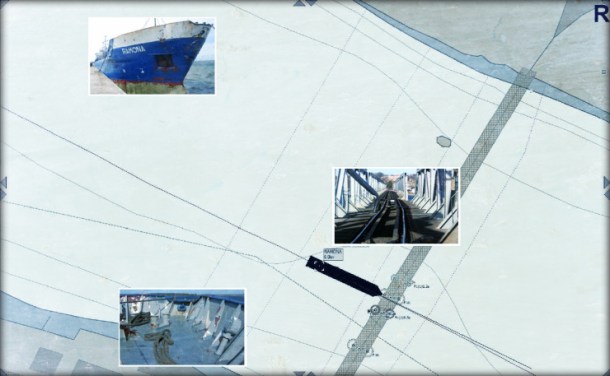












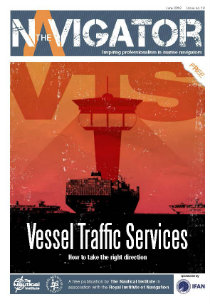

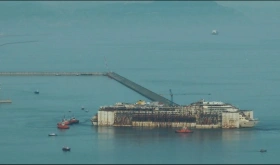

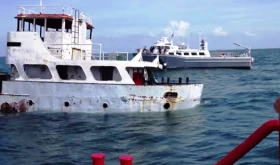
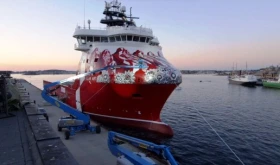
46.000.000 million danish kroners / 8.45 million U.S. dollars did it cost to fix the bridge